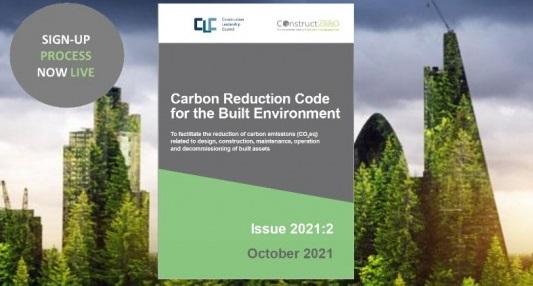This month also marks the launch of the sign-up process to the Carbon Reduction Code for the Built Environment that offers organisations a collaborative and supportive approach to reducing carbon.
Dee Dee Frawley, Programme Manager at the Cambridge Centre for Smart Infrastructure and Construction (CSIC), urges organisations to commit to the Code:
COP26 is underway and much hope is invested in this important event to secure the world-wide solidarity needed to make the required commitment to address climate change – reaching global net zero by mid-century and keeping 1.5°C within reach.
The built environment has an important role to play in the move to decarbonisation. The sector is reported to be globally responsible for 36% of energy consumption, 38% of energy related carbon emissions, 50% of resource consumption, and expected to double in total footprint by 2060. Energy from fossil fuels consumed in the construction and operation of buildings accounts for approximately half of the UK’s emissions of carbon dioxide, and the construction sector is the largest user of materials in the UK, producing the biggest waste stream in terms of tonnage.
There is no doubt that as a sector we need to do better and there are many excellent existing initiatives providing guidance to the sector including the ICE Carbon Project, Construction Innovation Hub Value Toolkit, Infrastructure Carbon Review Seven Years On report, RICS Building Carbon Database, and the Construction Leadership Council’s Co2nstructZero programme to name a few.
The Carbon Reduction Code for the Built Environment, which forms part of Co2nstruct Zero, was published by CSIC in June this year to provide a mechanism that enables individual organisations to publicise their annual progress, and thereby collaborate and share best practice on their journey to net zero with the intention of accelerating progress across the industry.
Developed by the Achieving Net Zero Cross-Industry Working Group which was convened by CSIC in 2020 and includes more than 40 representatives from a diverse range of consultants, contractors, industry groups, sustainability experts and local and central government, the Code was devised to provide challenging yet practical ways to move the infrastructure and wider construction industry towards meeting the UK’s goal of net zero emissions by 2050 and the Scottish government’s goal of meeting net zero emissions by 2045.
The Code is designed to facilitate collaborative action towards reducing carbon emissions (CO2eq) related to the design, construction, maintenance and operation of built assets and, importantly, asks organisations to report annually on reducing emissions. Transparency at this level enables participating organisations to learn from each other, collaborate and share best practice. Creating a supportive community also invites organisations leading the field in net zero to offer support and guidance to others who are at an earlier stage of transition, including smaller companies which might lack the resources available to larger firms.
Following early trials by the National Association of Construction Frameworks (NACF), the Environment Agency, and Skanska Costain STRABG and HS2 Joint Venture, the Code has been further developed to reflect industry feedback and has now been reissued (Carbon Reduction Code for the Built Environment Issue 2021:2) and published on the CSIC website along with the sign-up process that offers three levels of commitment. There are three levels of compliance with the code: Pledger, Signatory and Champion. All organisations must be in accordance with the minimum entry level of compliance to attain Pledger status. This means agreeing to the core commitments of setting out plans to meet net zero by 2045, including annual targets, and publishing these and the progress made against them every year. Pledger level also requires setting an interim target to reduce net direct and indirect carbon emissions for 2030, which aligns with or exceeds government strategy. Signatory level requires signing up to additional core commitments relevant to the organisation – be it client or supply chain. Champion level sees commitments to more ambitious collaborative progress. To enable wide participation, organisations may join at a global, national or regional level or at a major project level.
Creating a community of built environment organisations to support the journey to net zero will help everyone to reach the destination of net zero. The more organisations that sign up to the Code the greater the difference we can make.
https://www.worldgbc.org/thecommitment
https://www.constructionleadershipcouncil.co.uk/about/
Reproduced courtesy of University of Cambridge, Department of Engineering
